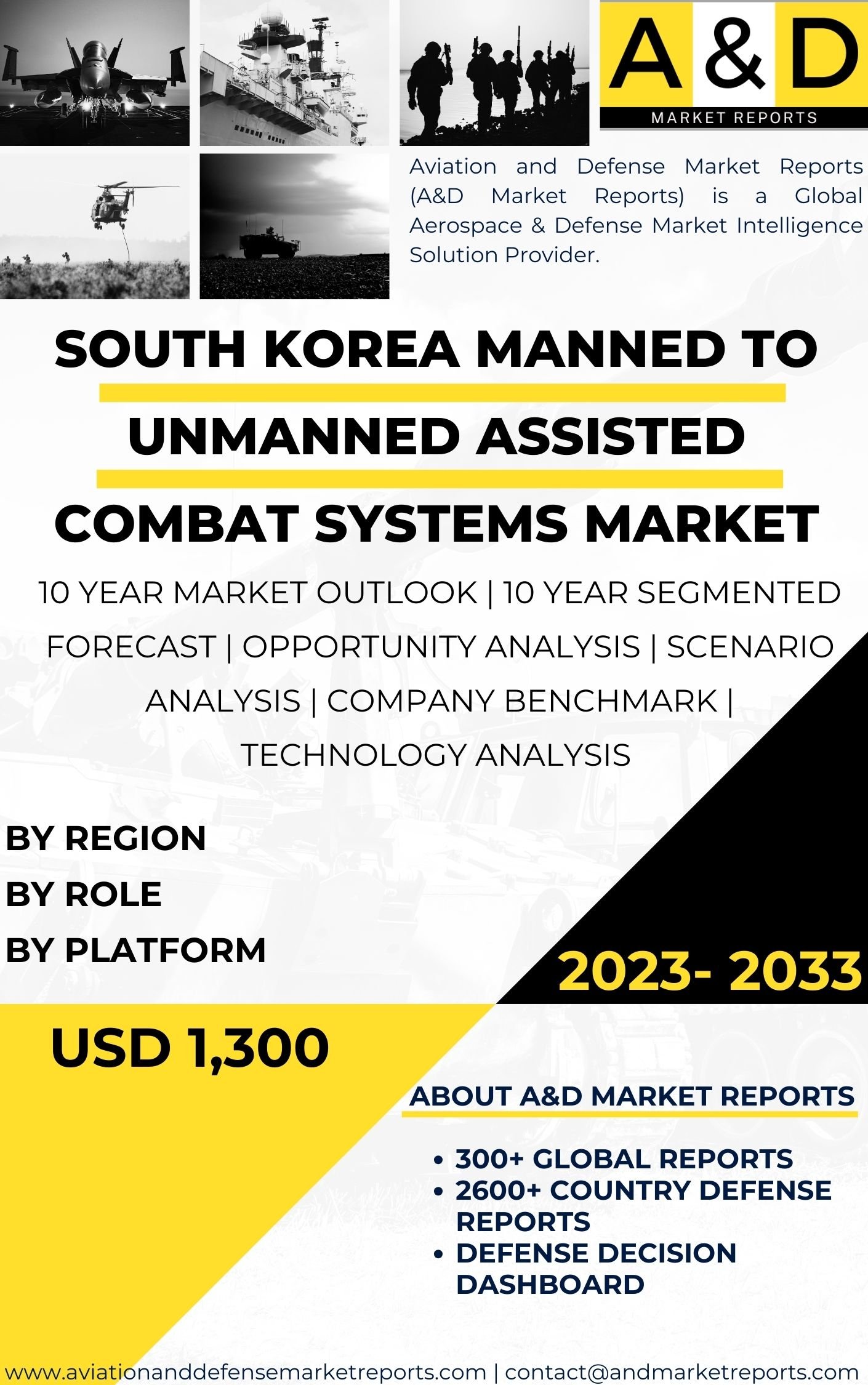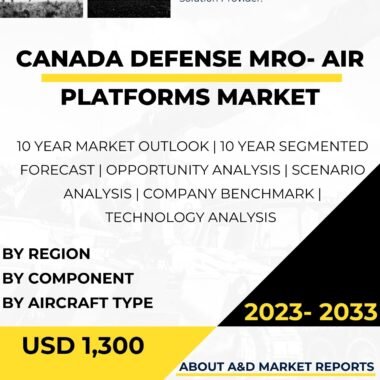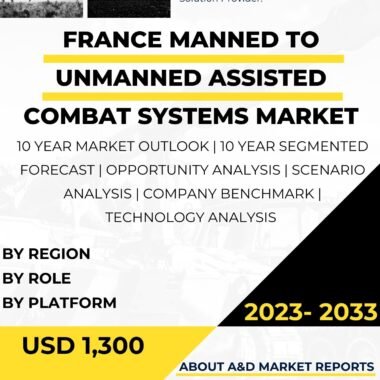Description
South Korea’s active participation in the global market for manned to unmanned assisted combat systems reflects its commitment to enhancing its military capabilities through the integration of cutting-edge technology. These systems represent a significant shift in modern warfare, combining the strengths of human operators and unmanned platforms to achieve superior combat effectiveness and situational awareness.
South Korea’s investments in manned to unmanned assisted combat systems are driven by several key factors. Firstly, the nation recognizes the need to maintain a competitive edge in the face of evolving security threats. These systems enable human operators to work alongside unmanned platforms, such as drones and robotic vehicles, to conduct a wide range of military missions, from reconnaissance and surveillance to target engagement and logistics support.
One of the notable aspects of South Korea’s participation in this market is its commitment to indigenous development. The nation has embarked on ambitious projects to design and manufacture advanced combat systems that seamlessly integrate manned and unmanned elements. By doing so, South Korea reduces its reliance on foreign suppliers and promotes technological self-sufficiency, contributing to its defense modernization efforts and fostering innovation.
Furthermore, South Korea’s involvement in the manned to unmanned assisted combat systems market involves collaboration with international defense partners, technology firms, and research institutions. These partnerships facilitate the acquisition of cutting-edge technology, knowledge exchange, and collaborative research and development initiatives. South Korea’s efforts to position itself as a center of excellence in this field have contributed to the growth of a robust defense industrial ecosystem.
Moreover, the nation’s investments in these systems align with its broader defense export ambitions. South Korea aims to become a significant player in the global defense industry, exporting manned to unmanned assisted combat systems and related technologies to international customers. This not only enhances its global standing but also generates revenue and strengthens diplomatic ties.
In conclusion, South Korea’s active engagement in the global market for manned to unmanned assisted combat systems underscores its commitment to advancing its military capabilities through the integration of innovative technology. By investing in advanced combat systems that harness the combined power of humans and unmanned platforms, the nation not only strengthens its defense posture but also contributes to economic growth and technological advancement in the defense sector.
Table of content
Table Of Contents
1 Market Introduction
1.1 Market Introduction
1.2 Market Definition
1.3 Market Segmentation
1.4 10 Year Market Outlook
2 Market Technologies
3 Global Market Forecast
3.1 Global Market Forecast
3.2 By Role
3.3 By Platform
4 APAC Market Trends & Forecast
4.1 Drivers, Restraints And Challenges
4.2 PEST
4.3 Market Forecast
4.3.1 Market Forecast By Role
4.3.2 Market Forecast By Platform
4.4 Scenario Analysis
4.5 Key Companies& Profiling
5 South Korea Analysis
5.1 Current Levels Of Technology Maturation In This Market
5.2 Market Forecast
5.2.1 Market Forecast By Role
5.2.2 Market Forecast By Platform
5.3 Scenario Analysis
5.4 Country Defense Budget (Historical and 10- year forecast)
5.5 Defense Budget Category Spending- 10- year forecast
5.6 Procurement Analysis
5.7 EXIM Data
5.8 Patents
6 Opportunity Matrix
6.1 By Role
6.2 By Platform
7 Scenario Analysis
7.1 Scenario 1
7.1.1 By Role (Scenario-1)
7.1.2 By Platform(Scenario-1)
7.2 Scenario 2
7.2.1 By Role (Scenario-2)
7.2.2 By Platform(Scenario-2)
8 Company Benchmark
9 Strategic Conclusions
10 About Aviation And Defense Market Reports
Segments
By Role
By Platform
List of Tables
Table1: Global Market Forecast, Manned to Unmanned Assisted Combat Systems Market
Table2: APAC Market Forecast, Manned to Unmanned Assisted Combat Systems Market
Table3: APAC Market Forecast, By Role
Table4: APAC Market Forecast, By Platform
Table5: APAC, Scenario Analysis
Table6: South Korea Market Forecast, Manned to Unmanned Assisted Combat Systems Market
Table7: South Korea Market Forecast, By Role
Table8: South Korea Market Forecast, By Platform
Table9: South Korea, Scenario Analysis
Table 10: South Korea Defense Budget 10 Year Forecast
Table 11: South Korea, Defense Budget Category Spending- 10- year forecast
Table 12: South Korea, Procurement Analysis
Table 13: South Korea, EXIM Data Analysis
Table 14: South Korea, Opportunity Analysis, By Role
Table 15: South Korea, Opportunity Analysis, By Platform
Table 16: South Korea, Scenario Analysis, By Role
Table 17: South Korea, Scenario Analysis, By Platform
Figure 1: Market Segmentation, South Korea Manned to Unmanned Assisted Combat Systems Market
Figure 2: Key Technology Analysis, Manned to Unmanned Assisted Combat Systems Market
Figure 3: Global Market Forecast, Manned to Unmanned Assisted Combat Systems Market
Figure 4: APAC, Market Forecast, Manned to Unmanned Assisted Combat Systems Market
Figure 5: APAC, Market Forecast, By Role
Figure 6: APAC, Market Forecast, By Platform
Figure 7: APAC, Scenario Analysis
Figure 8: South Korea, Market Forecast, Manned to Unmanned Assisted Combat Systems Market
Figure 9: South Korea, Market Forecast, By Role
Figure 10: South Korea, Market Forecast, By Platform
Figure 11: South Korea, Scenario Analysis
Figure 12: South Korea, Defense Budget 10 Year Forecast
Figure 13: South Korea, Defense Budget Category Spending- 10- year forecast
Figure 14: South Korea, Procurement Analysis
Figure 15: South Korea, EXIM Data Analysis
Figure 16: South Korea, Opportunity Analysis, By Role
Figure 17: South Korea, Opportunity Analysis, By Platform
Figure 18: South Korea, Scenario Analysis, By Role
Figure 19: South Korea, Scenario Analysis, By Platform
Figure 20: Company Benchmark




